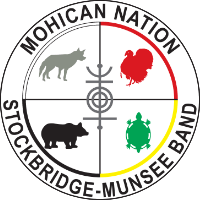Section ENV.06.10 — Standards And Prohibited Uses In Wellhead Protection Districts
(a) The following standards apply to uses permitted within Districts A and B.
(1) Of the lot area not covered by impervious surfaces, 75% shall be maintained or developed with vegetative cover not requiring the use of pesticides or fertilization after the initial establishment.
(2) Above-ground fuel storage tanks shall provide leak-proof secondary containment not less than 125% of the tank volume and basement fuel storage tanks shall provide secondary containment for not less than 100% of the tank volume.
(3) All abandoned wells shall be properly backfilled and sealed using bentonite pellets or other suitable materials approved by the U.S. Environmental Protection Agency guidelines within one month of abandonment
(b) The following uses of land are prohibited in District A. This list is not exhaustive since the only permitted uses are those specifically listed above in Section ENV.06.09.
(1) On-site private sewage systems.
(2) Underground storage tanks of any size and other storage tanks without secondary containment basins.
(c) The following uses of land are prohibited in both Districts A and B. These uses are prohibited based on the high probability that activities routinely associated with these uses will cause groundwater contamination. This list is not exhaustive since the only permitted uses are those specifically listed above in Section ENV.06.09.
(1) Agricultural activities, including animal confinement facilities, animal waste facilities and land spreading of animal waste.
(2) Pesticide and/or fertilizer storage and use.
(3) Commercial activities involving materials that can contaminate groundwater, such as:
(A) Dry cleaning businesses.
(B) Printing and duplicating businesses.
(C) Manufacturing or industrial businesses.
(D) Bulk fertilizer and/or pesticide facilities.
(E) Asphalt products manufacturing.
(F) Electroplating facilities.
(G) Exterminating businesses.
(H) Paint and coating manufacturing.
(I) Lumber treatment tanks and other facilities.
(4) Landfills, facilities for the storage or disposal of waste materials, recycling facilities, and other waste disposal activities, including land spreading.
(5) Junk yards and auto salvage yards.
(6) Gas stations.
(7) Maintenance and repair establishments, including vehicle maintenance and repair, body repair, and tire and battery services.
(8) Bus or truck terminals.
(9) Salt storage, including salt/sand combinations.
(10) Aquaculture activities.
(11) Cemeteries.
